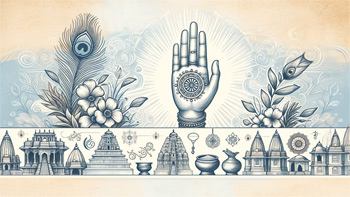Jain holidays are a reflection of the Jain community's deep spiritual values and historical traditions. These days are not merely occasions for celebration; they embody the Jain principles of non-violence (Ahimsa), truth (Satya), and asceticism (Aparigraha). Each holiday offers a unique perspective on Jain philosophy, fostering spiritual growth and community bonds. This article takes you through the most important Jain holidays, exploring their significance, traditions, and the role they play in the life of the Jain community.
Mahavir Jayanti: Celebrating the Birth of Lord Mahavir
Mahavir Jayanti marks the birth of Lord Mahavir, the 24th and last Tirthankara (spiritual teacher) in Jainism. It is one of the most auspicious days in the Jain calendar, falling in March or April. Devotees engage in charitable acts, prayer, and visit temples to pay homage. The holiday emphasizes Lord Mahavir's teachings on non-violence, renunciation, and righteousness, inspiring Jains to live a life of compassion and simplicity.
Paryushan Parva: The Festival of Self-Purification
Paryushan Parva, known as the festival of self-purification, is a significant period of intense spiritual renewal and reflection for Jains. Lasting eight to ten days, it involves observing fasts, meditating, and studying Jain scriptures. The festival culminates in the day of Samvatsari, where Jains seek forgiveness for any harm they have caused and forgive others, reinforcing the value of forgiveness in Jain ethics.
Diwali in Jainism: Remembering Lord Mahavir's Nirvana
Diwali in Jainism is celebrated to commemorate the attainment of Moksha (liberation) by Lord Mahavir. Unlike the Hindu festival of lights, Jain Diwali is marked by a more solemn observance, including fasting, reading the scriptures, and remembering the teachings of Lord Mahavir. Temples are illuminated, signifying enlightenment and the victory of knowledge over ignorance.
Mahamastakabhisheka: The Grand Jain Ceremony
Mahamastakabhisheka, a grand and rare Jain ceremony, occurs once every 12 years at the statue of Lord Gomateshwara (Bahubali) in Shravanabelagola. The festival sees the anointing of the statue with various substances like milk, saffron, and gold coins. This ritual symbolizes the spiritual cleansing, detachment, and the sacrifices made by Lord Bahubali, including his year-long meditation standing motionless.
Akshaya Tritiya: The End of Rishabhanatha's Year-long Fast
Akshaya Tritiya commemorates the end of the year-long fast undertaken by Lord Rishabhanatha, the first Tirthankara. It is a day of fasting and charity, underscoring the Jain values of self-discipline and generosity. Devotees offer sugarcane juice, symbolizing the breaking of Lord Rishabhanatha's fast, and engage in acts of giving, reflecting the virtue of selflessness.
Kartik Purnima: The Holy Jain Pilgrimage Day
Kartik Purnima, celebrated on the full moon day of the Kartik month, holds religious significance for Jains. Many undertake a pilgrimage to Palitana, a sacred Jain site, to worship at the temples atop Shatrunjaya Hill. This day emphasizes the Jain practice of pilgrimage as a form of penance and the pursuit of spiritual awakening.
Jain New Year: Welcoming New Beginnings
The Jain New Year starts the day after Diwali and is a time for joyous celebrations. It marks the beginning of a new year and new opportunities for spiritual growth. Jains spend the day in reflection, prayer, and reinforcing their commitment to Jain principles. The New Year is an occasion to rejuvenate one's spiritual goals and practices.
Jain holidays, deeply rooted in spiritual and ethical teachings, play an essential role in the lives of Jains worldwide. They are not only commemorations of historical events but also serve as reminders of the path of righteousness, non-violence, and compassion. Through these observances, Jains renew their commitment to their faith, foster community bonds, and carry forward their rich spiritual heritage.
